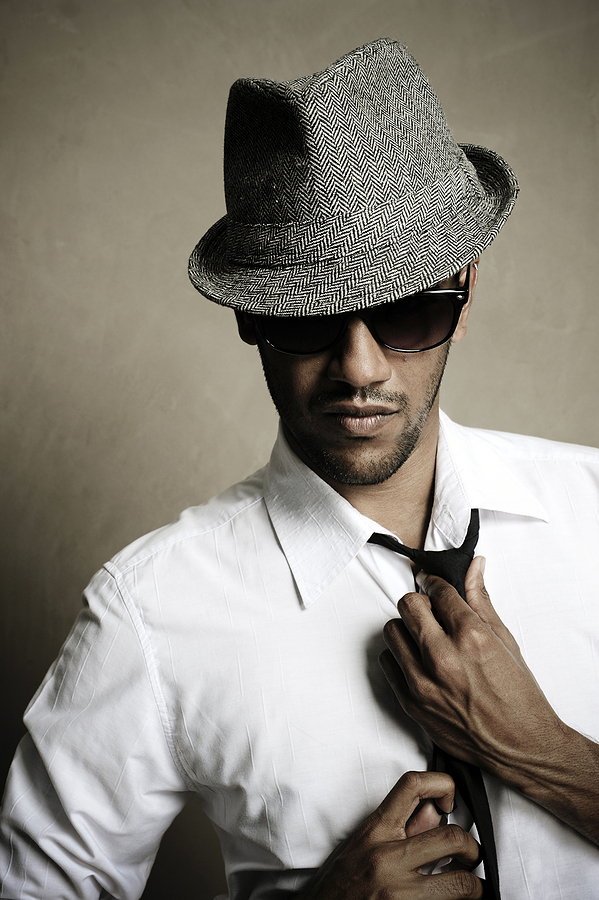How to understand and talk about men’s fashion

By carlos marinho May 12, 2021
Out-of-fashion people tend to have a healthy sense of humor when they talk about fashion, but both they and enthusiasts (particularly those with classical sensibilities) experience a certain transformation of anger when faced with something outside the box itself. Some people treat fashion as if it were a bloody sport.
When you analyze the discussions about clothes you see that they are always the same things. If it is someone complaining about a parade, you will find some way to comment that the clothes are strange. Whether it is about a handmade or bespoke product, someone will question what the purpose of all manual work is. If someone is looking for information to dress well, they will certainly complain about the prices (OK, fair).
These criticisms are rarely about the clothes themselves. They are just reflections of the person’s values. Many of the arguments are just difficulty in understanding how different people value fashion and clothing in different ways. If you stop to think about someone else’s set of values, you will find the answer to almost any question, including “who would use this in real life?”, “Is handmade better?” or “is it tailor-made worth it?”
To explain how I think about men’s fashion and how you can start to refine your look at the subject, if you are interested, I will separate everything in three dimensions:
- Practicality : Basically, but with different intensities, we all buy clothes for the same reasons. We want to be comfortable, protect from the elements and be well with our appearance.
- Design : To achieve the above results, designers need to create. They idealize versions of motorcycle jackets, parkas, coats, suits and costumes, sports shirts, knitwear, pants, boots, shoes, etc.
- Construction : After the idea comes, the outfit needs to be made. Construction has to do with how to make this physical object. This can include goodyear welting, thermal bonding interlining, hand stitching interlining, machine stitching, hand stitching, different stitches, etc.
Since fashion is a commercial thing, and not a pure nonprofit art, brands should consider all three of these when launching a collection. They have to think about the likelihood of what to sell in a store (the practical dimension), along with the way they would like to design and build a garment.
In practice, most brands choose to prioritize one of these dimensions more than the others. Let’s take a few examples!
MEN’S FASHION BRANDS FOCUSED ON PRACTICALITY
Most brands prefer to focus on practical features. This is not about being cheap or selling in bulk. Here are both companies like Uniqlo and Ralph Lauren and Tom Ford. It doesn’t matter if your budget is R $ 50 or R $ 50,000, there is a brand that will help you to be well dressed in a direct and conventional way.
See the photo above. The clothes are so generic that you cannot distinguish the brand. It’s J. Crew, but it could be Levi’s, Uniqlo, Gap, APC, and several others. These clothes are popular because when it comes to fashion, most people have very practical interests. They want to dress well, but without standing out from the crowd. They want to know which wallet takes up the least space. They want to know which tie to wear in the interview. They want to know what clothes to wear to go shopping.
Nowadays, that means wearing things like slim chinos, button down shirts (social in casual fabrics), a navy blue blazer, dark blue jeans, and other basic pieces of conservative clothing. Even though formal dress codes have disappeared, soft coding still normalizes what is most likely to be well accepted in each context. It makes sense?
That’s why there are a million stores ready to help you dress up for work, holidays, the beach, weddings, parties, bars, and many other occasions. These are the kind of clothes that make you look nice and well dressed, without making any strong statements about your personal style.
BRANDS FOCUSED ON MEN’S FASHION DESIGN
On the other hand, some brands focus more on design. That’s where fashion tends to confuse and lose people, but you need to be comfortable with the idea of ​​defying conventional norms. Or, at least, the idea of ​​someone dressing up with an expressive and artistic side – not just to go out on the street and fit in.
There are a million examples here. It has the continuous themes of Raf Simons around the resumption of youth, the unique blend of minimalism and relaxation made by Martin Margiela, among others. In an article in the New York Times , Susannah Frankel wrote the following about Margiela and her partner, Jenny Meirens:
“As radical as they are, none of these concepts would mean anything without clothes. “For me, one of the strongest things about Martin was that he took something very popular, ordinary or cheap and turned it into something chic,” says Meirens. He always used inexpensive materials and cheap glossy black coating. He made fat coats out of silver Christmas ribbons and dressed in golden plastic rings. There were the smoothly worn bars, the inverted seams, the reinvention of vintage finds, from butchers’ aprons to old wedding dresses, and turning clothes literally upside down and inside out. ”
Although not quite the same, brands like Kapital are known for their patchwork clothing. To say that these clothes look old and poorly made is not to understand. They are beautiful precisely because they are based on ideas of impermanence, imperfection and austerity. Check out this old publication I wrote about Japanese boron . (the designer versions are just reflections of the real, but you can say the same thing about almost all modern aesthetic traditions).
Other good examples include Rei Kawakubo, Yohji Yamamoto and Rick Owens. In Western Europe and the USA, traditional modeling tends to emphasize the idealized and gendered form. For women, this is a curved hourglass silhouette. For men’s fashion, it means a V-shaped athletic torso supported by a strong pair of legs.
Instead of revealing the body, designers like Yamamoto involve people in bulky fabrics, generous pleats and freer interpretations of the modern silhouette. Design wants to find creative ways to cut fabrics and create clothes; not just sexualize the body. What draws people’s attention is not only aesthetics, but also the concept.
The most common criticisms here are about the catwalks. For example, “who would use this in real life?” The answer is often as simple as “many people, particularly those who live in large cosmopolitan cities”. Other times, it can be something more complicated, about how a designer presents a great idea at a fashion show, but changes it before presenting it to stores. If you think you’ve never been affected by a parade, check your closet. Today’s tightest, shortest suits and pants exist thanks to the influence of Hedi Slimane and Thom Browne.
The way a brand treats a fashion show is not much different than how they treat their clothes. Companies that have more practical projects, like Zegna, often send their models marching down the catwalk. Those who focus on design, on the other hand, sometimes organize the event as if it were an art performance.
You can see this in the presentations by Thierry Mugler and John Galliano. Both launched fashion shows as if they were theatrical productions, with models dressed as heroes and villains. Martin Margiela, used creative lighting and video projections to emphasize his artistic and deconstructed creations. Recently, Rick Owens did a parade with dancers from the American sororities . It was half a performance and half a fashion show.
The most cynical will say that this is all just marketing to get the attention of the press and sell clothes. Yes, this is probably true, but that part of the goal does not negate the artistic value. Creative designers, both in their collections and in their presentations, compel us to reconsider the traditional norms of men’s fashion. To appreciate this work, you must keep in mind that clothing can be more than just practical tools – they can be art, creative concepts or ways to start new conversations about our behavior.
If you are still suspicious of unconventional projects, I recommend accessing this page Met Museum about Alexander McQueen . His works are some of the most brilliant of all.
Just to finish off the design: it’s not just hard-to-use conceptual brands that have that focus. As I said, brands always work all three, with a different degree of dedication in each one.
Boot and shoe brands, for example, have designs and shapes too. The more specific, the more difficult it is to sell. Very small details such as the shape of a beak and the height of a heel can make all the difference in the final look. Old Joe, in the photo above, is obviously a brand attached to classic styles, but seeks to mix a conceptual presentation and silhouettes that escape the retro reproduction pattern of a Real Mccoys, for example.
articlization.com







No Comment